Born in Mecklenburg in 1843, Frigyes Stühmer learned the craft of making candy in Ludwigslust. After his work in Hamburg and Prague, he arrived in Pest in 1868, where he took over the management of Ferenc Nagy's factory on Szentkirályi Street (formerly known as Ősz Street), thus, the founding of his company is dated for that time. Two years later, in 1870, he became the owner of the factory.

Portrait of Frigyes Stühmer (Source: Hungarian National Digital Archive)
Initially, it was limited to the production of candy, but later the company's repertoire gradually expanded: their products included chocolate candies, Christmas candies and Christmas and Easter chocolate figures. The company, which is expanding more and more, has gained professional recognition. The Stühmer chocolate won a gold medal at the national exhibition in Székesfehérvár in 1879, and Frigyes Stühmer was honoured with a Crowned Golden Cross of Merit by Franz Joseph at the National General Exhibition in 1885 for his role in the development of Hungarian industry.
The founder of the company built a new factory in Ősz Street in 1883: a new, modern factory was built with steam-powered machines brought from Dresden; this made it possible to produce large-scale chocolate in Hungary. Chocolates, nougat, pralines, candies and cocoa powder were also on offer, which became available in the growing Stühmer Stores in the country and later in several major European cities.
After the death of the factory founder Frigyes Stühmer in 1890, his widow and her brother took over the management of the company, and one of the sons, Géza Stühmer, became the manager, who held office until World War II. Stühmer's branch network was completely developed during this period: in addition to the store next to the factory, they had shops in numerous parts of the city, the most important of which were Kecskeméti Street in the city centre and Margit Boulevard in Buda.
The company that survived World War I and the Soviet Republic began further development in 1928: a new five-storey factory was built at 8 Szentkirályi Street, based on the plans of Ferenc Kende. In the same year, the company was transformed into a public limited company with a registered capital of 1,200,000 pengos.

The building of the Stühmer Factory on Szentkirályi Street was handed over in 1928 (Source: Budapest, 2010. Issue 8)
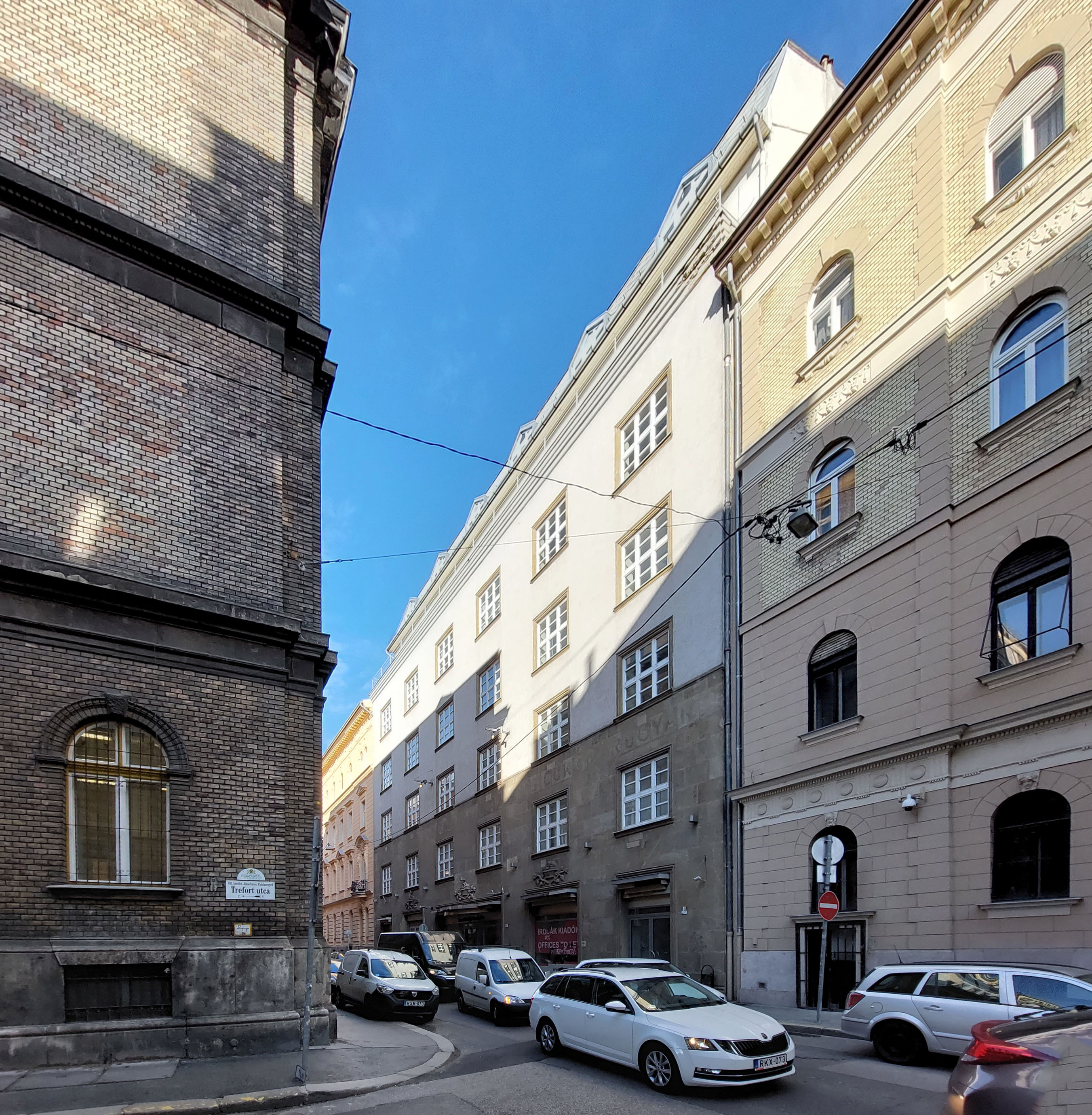
The former factory building now houses the Szentkirályi Office Building. Traces of the removed original inscription can still be seen on the facade of the renovated building (Photo: Balázs Both/pestbuda.hu)
At that time, in addition to more than sixty branches, they already had a distribution plant in Paris and a warehouse in Opatija (Croatia). The perfectionist nature of the Stühmer Factory is well exemplified by the fact that the design of the packaging of the products was entrusted to craftsmen: Ernő Jeges, Ilona Szirmai and Kató Lukáts made plans for them.
In the 1930s, the new factory building proved to be too small, so a new warehouse building was built in Szentkirályi Street with the purchase of a neighbouring residential house. The number of workers increased to 800. Due to the rapid development, it became clear that a new factory had to be built again: this work was started in 1939, but already in Ferencváros, at 20 Vágóhíd Street.
The 106-metre-long, five-story building was designed by the Olgyay brothers and handed over in 1943. The mosaic of Eszter Hollós Mattioni, who commemorates Frigyes Stühmer, who founded the company 75 years earlier, was also unveiled in the lobby of the building in the same year. The special creation can still be viewed today.
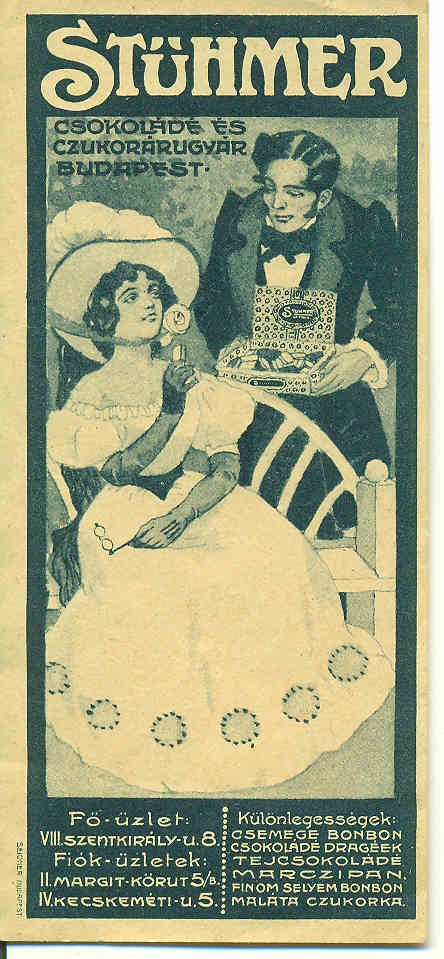
Advertising card for the Stühmer Chocolate Factory (Source: Hungarian National Digital Archive)
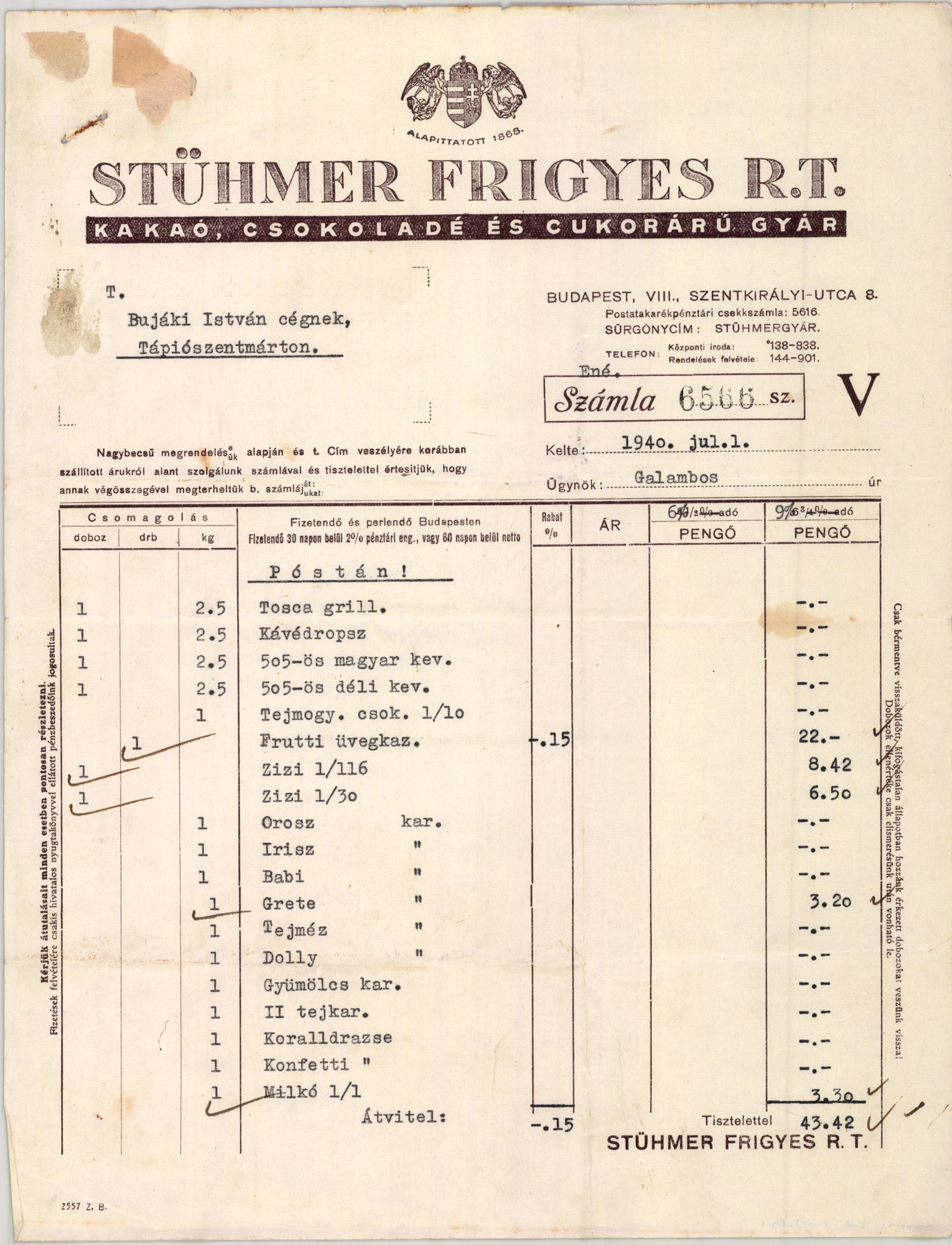
The invoice of the chocolate factory from 1940 (Source: Hungarian Museum of Trade and Tourism)
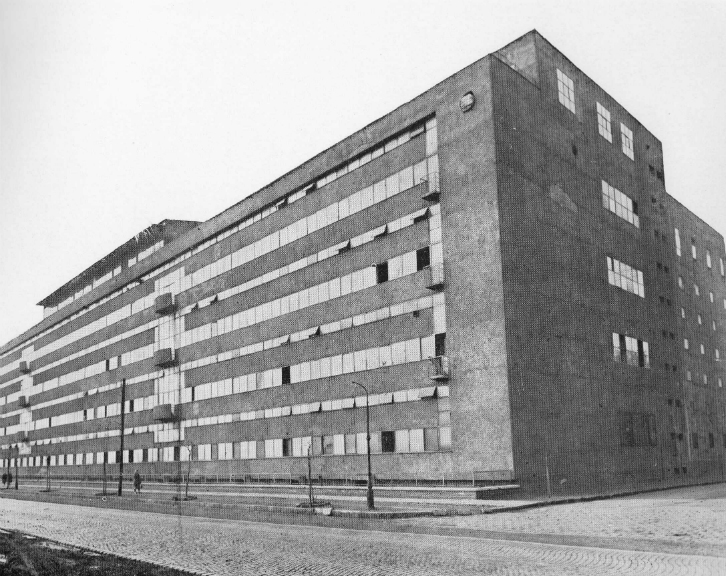
The new building of the factory was completed in 1943 at 20 Vágóhíd Street in Ferencváros (Source: ferencvaros.hu)
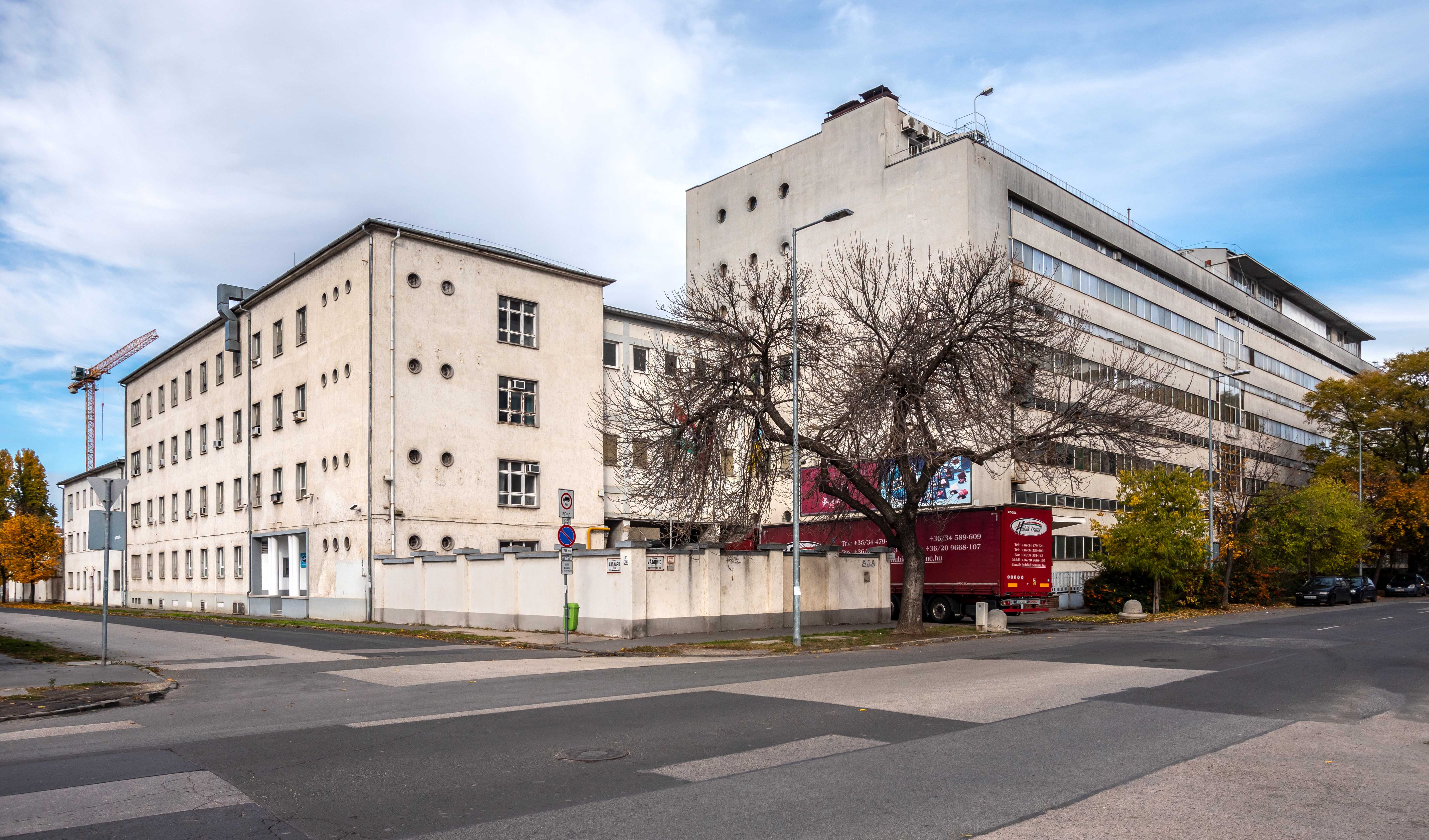
The huge building on Vágóhíd Street today operates as the headquarters of Bonbonetti Choco Ltd. (Photo: Balázs Both/pestbuda.hu)
From the 1930s onwards, Stühmer products appeared on the market, providing the company with outstanding success for many decades. These included the Ropp wafer, the Zizi dragee, Frutti caramel, the ancestor of chocolate figures, and perhaps their most popular product from 1941, Tibi chocolate, named after the grandson of the factory founder (spelled lowercase in the factory from the beginning). Tibi chocolate was still unfilled milk and dark chocolate at that time, and the filled versions were later marketed.
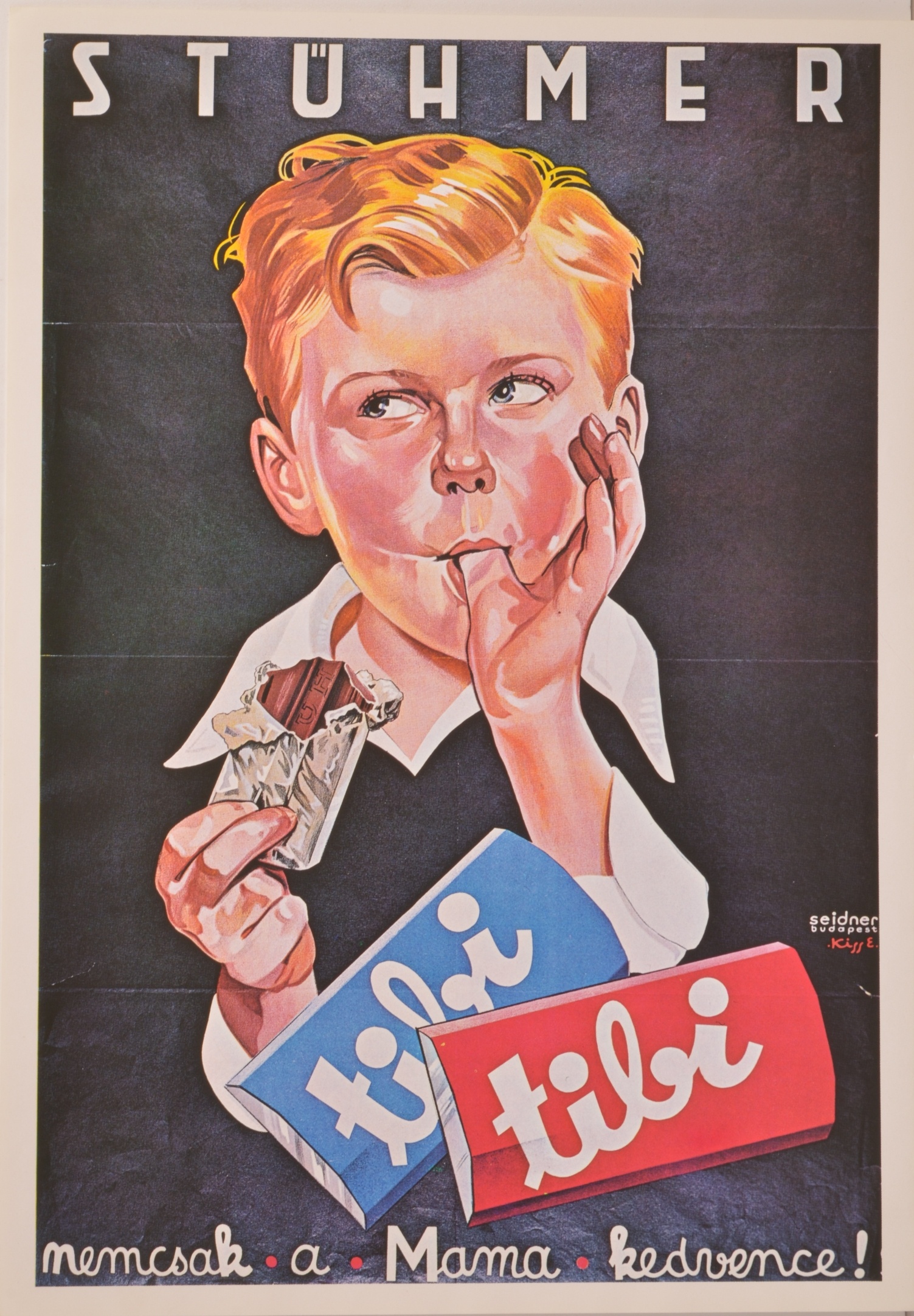
One of Stühmer's most popular products, Tibi chocolate, was first launched in 1941 (Source: NSzL Collection of Posters and Small Prints)
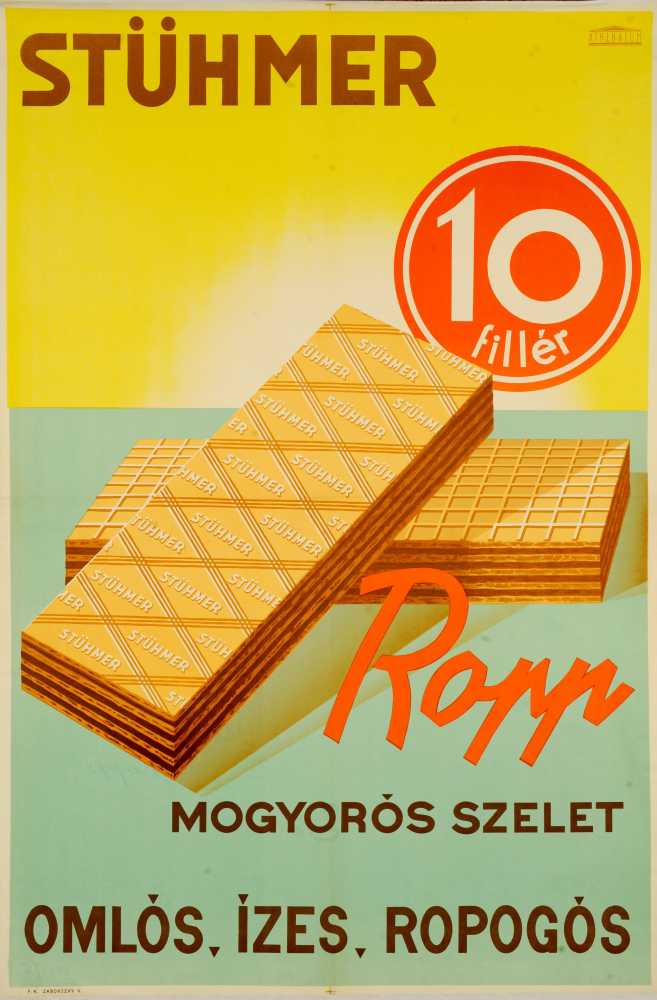
Advertising poster of the Ropp hazelnut wafer around 1945 (Source: NSzL Collection of Posters and Small Prints)
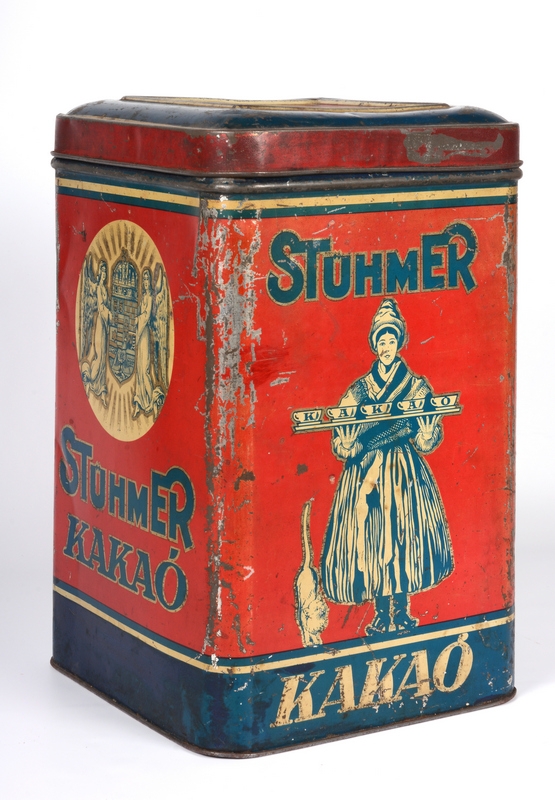
Stühmer's cocoa box with the angelic middle coat of arms (Source: Hungarian National Digital Archive)
.jpg)
The street front of the downtown Kecskeméti Street sample store in 1935 (Source: Hungarian National Digital Archive)
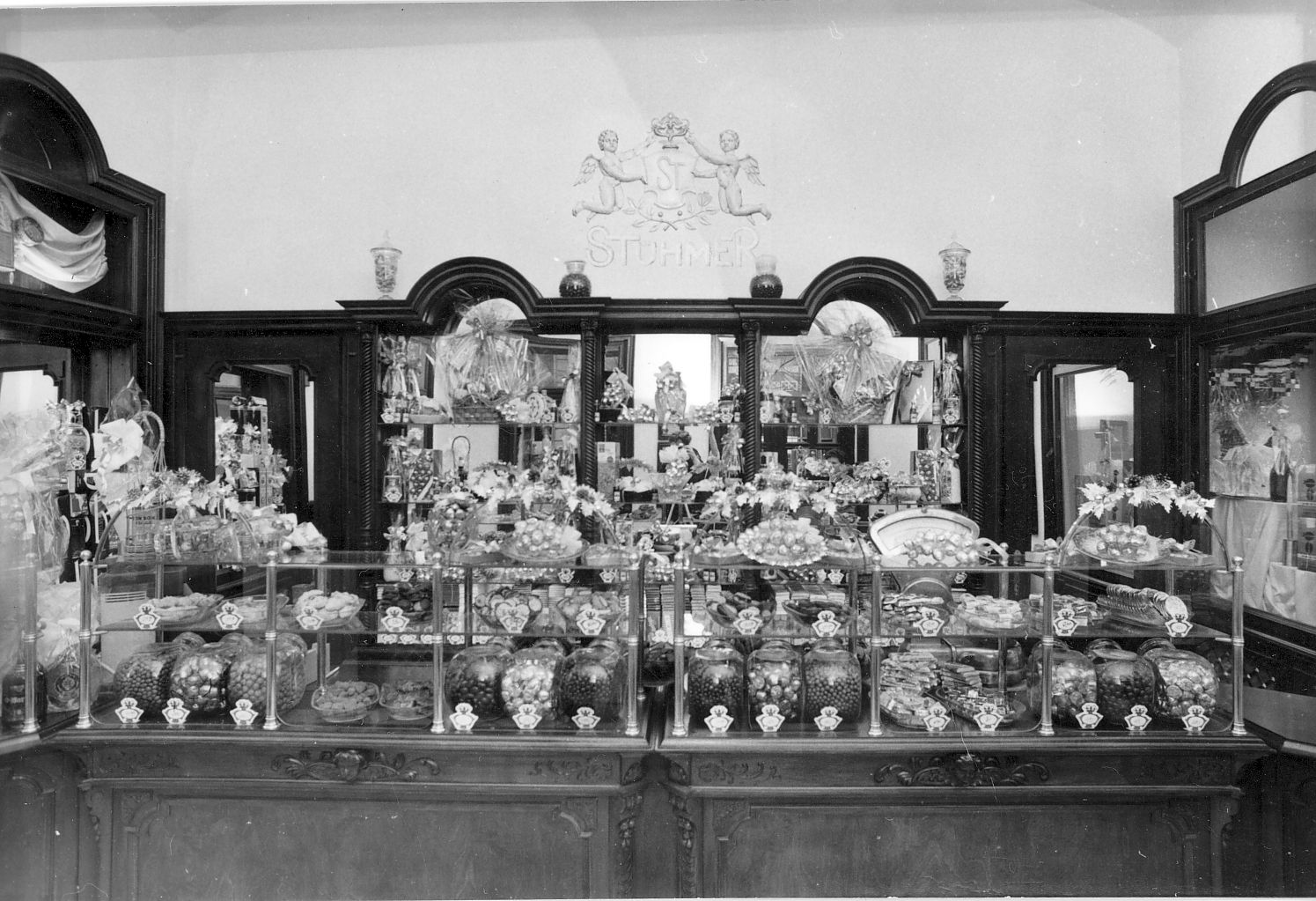
Detail of the equipment of the Kecskeméti Street shop on a recording made in 1989 (Source: Hungarian National Digital Archive)
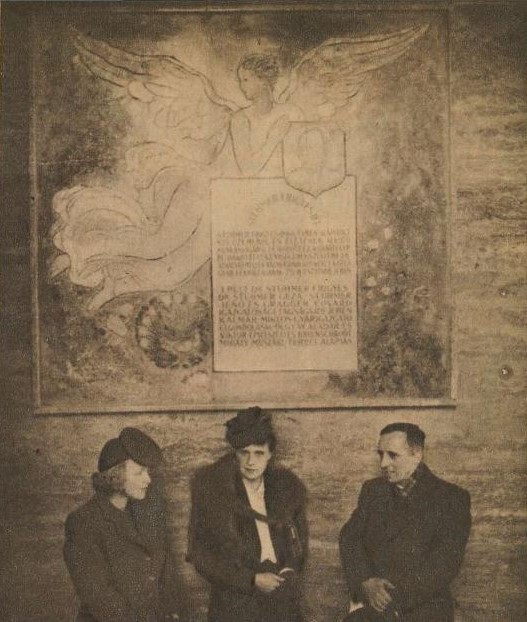
On the 75th anniversary of the factory's existence, in 1943, the mosaic of Eszter Hollós Mattioni was completed, commemorating Frigyes Stühmer; the work can still be seen on the wall of the lobby of the building on Vágóhíd Street today. The contemporary photograph shows the artist in the middle (Source: Színházi Magazin, 21 April 1943)
After World War II, the company was nationalised and the company’s executives were forced to emigrate. In the following decades, the Budapest Chocolate Factory operated in Vágóhíd Street, until the change of regime. Descendants who moved to Canada in the 1990s tried unsuccessfully to reclaim the factory, which was bought by Stollwerck. The new owner continued to produce old popular products such as Tibi chocolate, French dragee and Dunakavics (roasted peanuts with a sugary coating). With another change of ownership in 2002, the plant became the property of Bonbonetti Choco Ltd, which still operates in Vágóhíd Street.
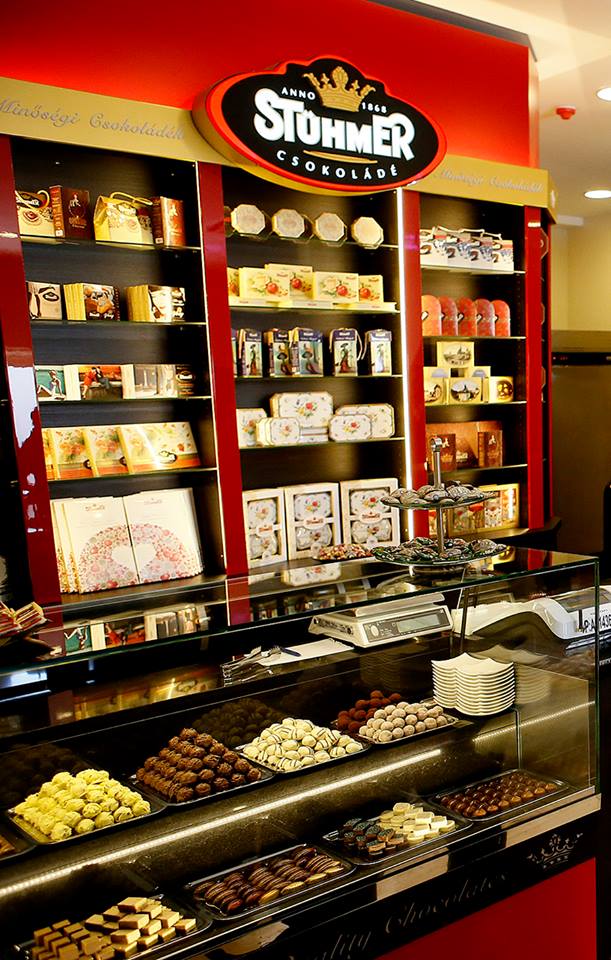
One of Stühmer's stores in the capital today (Photo: stuhmer.hu)
Entrepreneur Péter Csóll bought the Stühmer brand name from its previous owner in 2008, so the production of Stühmer products could resume. The new chocolate factory, built in the villages of Novaj and then Maklár, still produces quality Stühmer sweets; the company's sample stores can also be found in the capital.
Cover photo: The street front of the Stühmer sample shop on Kecskeméti Street in 1935 (Source: Hungarian National Digital Archive)

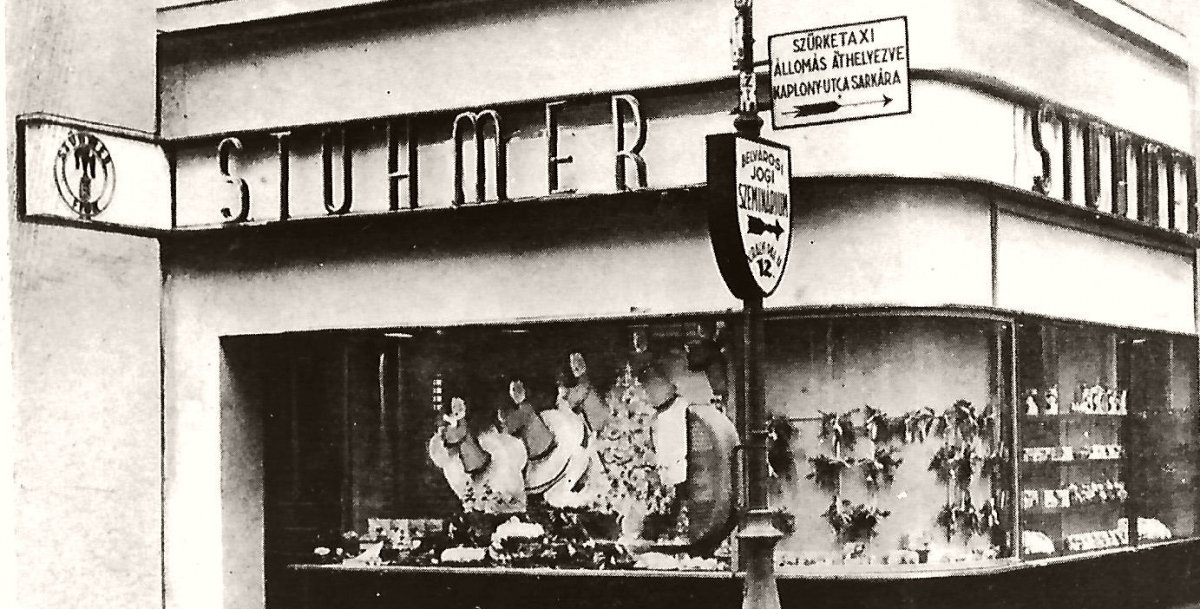


































Hozzászólások
Log in or register to comment!
Login Registration